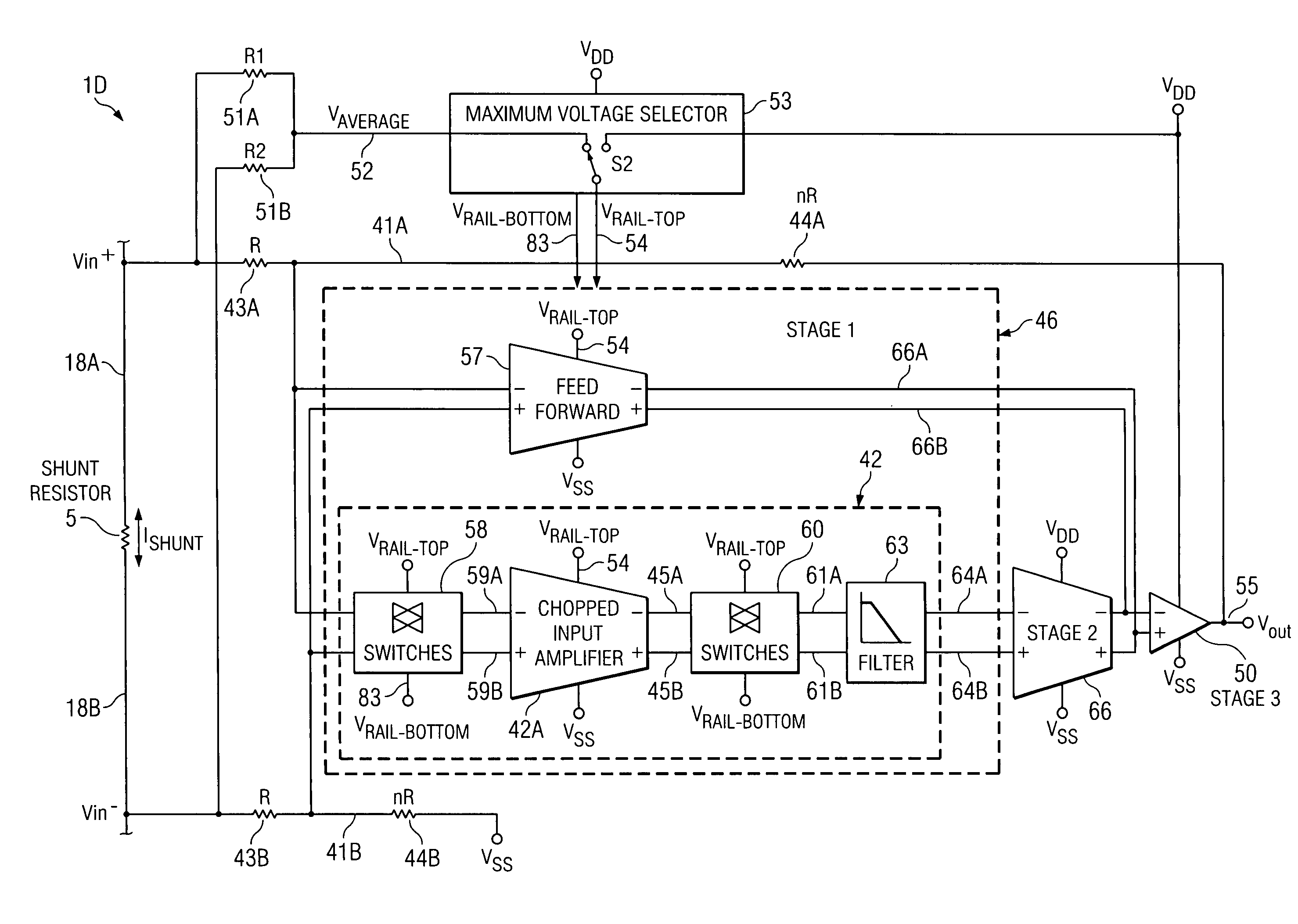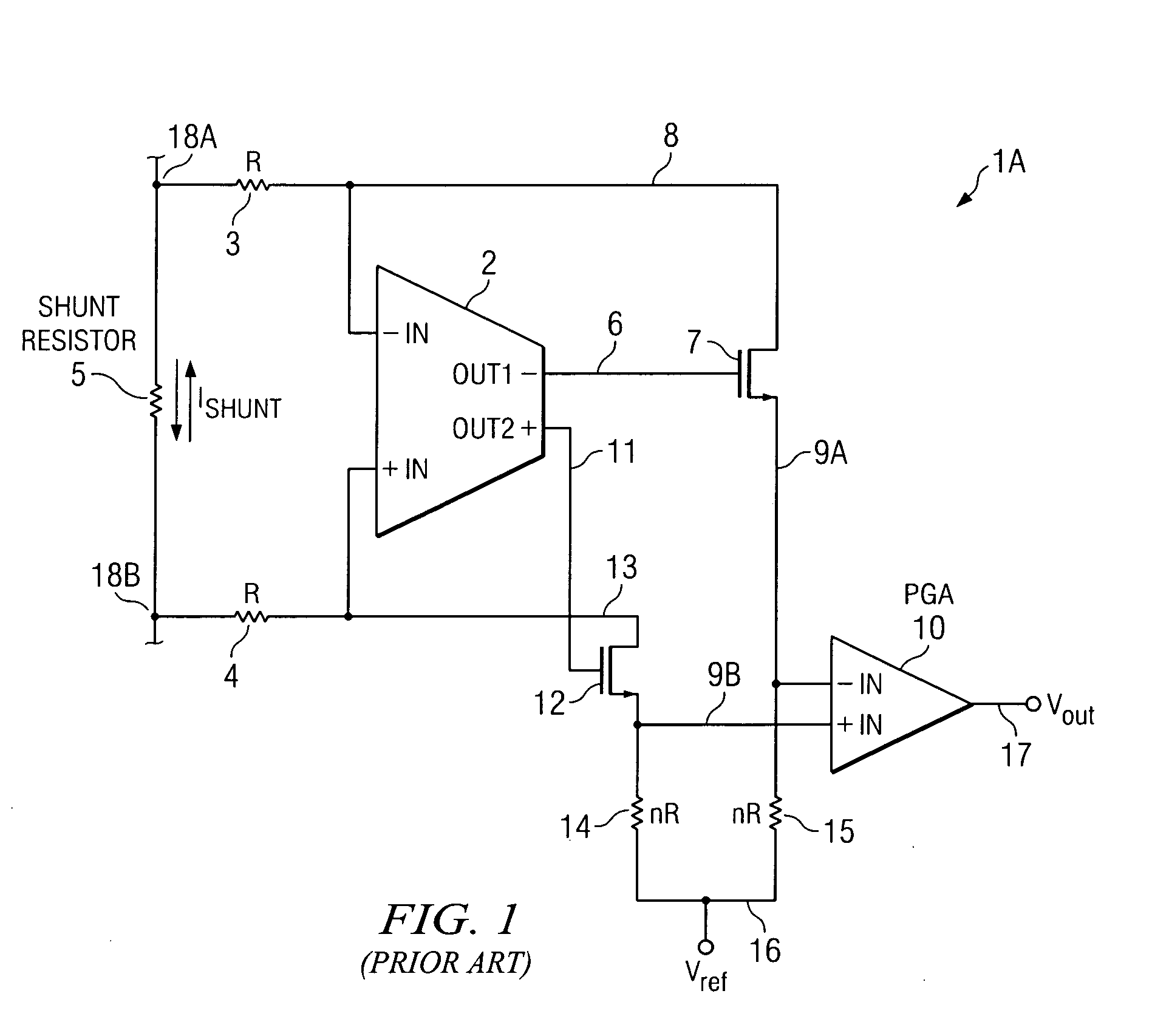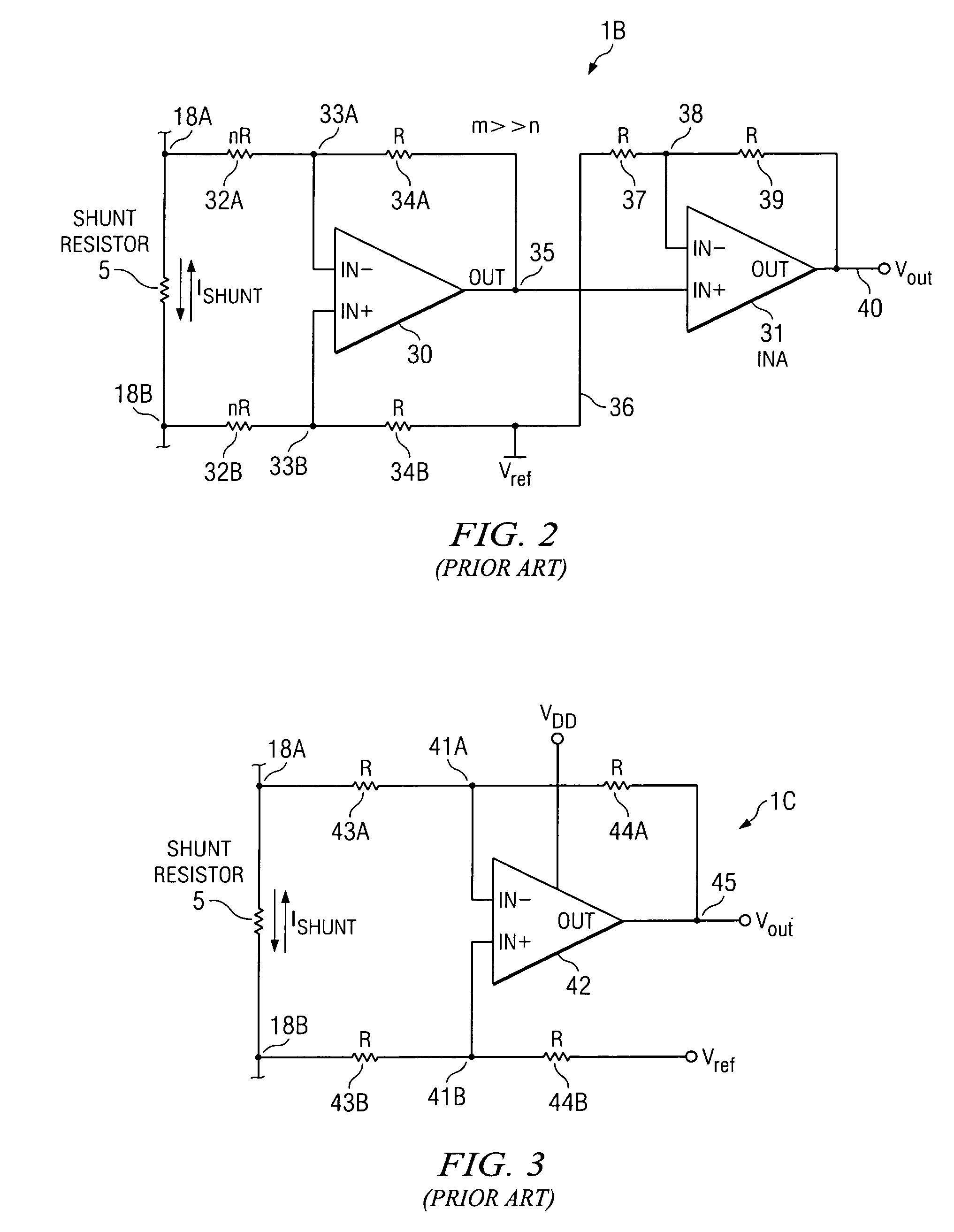High-voltage differential amplifier and method using low voltage amplifier and dynamic voltage selection
- Summary
- Abstract
- Description
- Claims
- Application Information
AI Technical Summary
Benefits of technology
Problems solved by technology
Method used
Image
Examples
Embodiment Construction
[0035]The present invention extends the common mode input range of a current shunt amplifier beyond the power supply voltage by utilizing the common mode input voltage to power the input stage, allowing electrical “floating” of a low voltage amplifier in the input stage.
[0036]Referring to FIG. 4, current shunt amplifier 1D measures the voltage Vin+−Vin− produced between the terminals 18B and 18A of external shunt resistor 5 in response to a shunt current ISHUNT, and includes a first or “front end” stage input pre-amplifier 46, a conventional second stage amplifier 66, and a conventional third or output stage amplifier 50. First stage input pre-amplifier 46 includes a chopper-stabilized input amplifier 42 which includes input amplifier 42A and its associated input chopping switches 58, its associated output chopping switches 60, and a digital filter 63. Input amplifier 42A has its (−) and (+) inputs coupled by means of conductors 59A and 59B, respectively, to outputs of chopping swit...
PUM
 Login to View More
Login to View More Abstract
Description
Claims
Application Information
 Login to View More
Login to View More - R&D
- Intellectual Property
- Life Sciences
- Materials
- Tech Scout
- Unparalleled Data Quality
- Higher Quality Content
- 60% Fewer Hallucinations
Browse by: Latest US Patents, China's latest patents, Technical Efficacy Thesaurus, Application Domain, Technology Topic, Popular Technical Reports.
© 2025 PatSnap. All rights reserved.Legal|Privacy policy|Modern Slavery Act Transparency Statement|Sitemap|About US| Contact US: help@patsnap.com



